When exam season rolls round, one of my favorite things to do is bake bread.
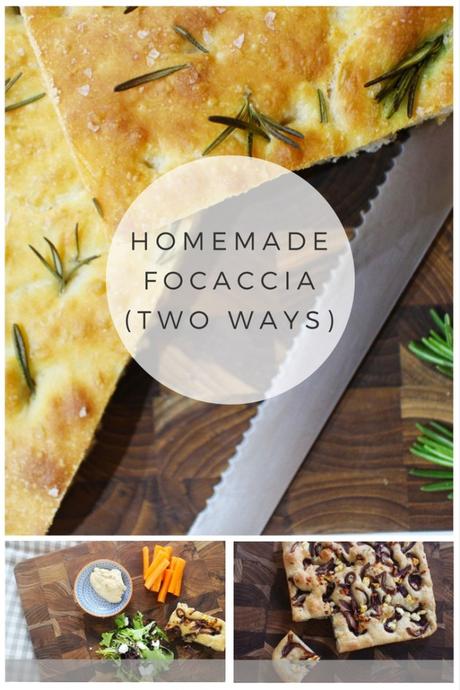
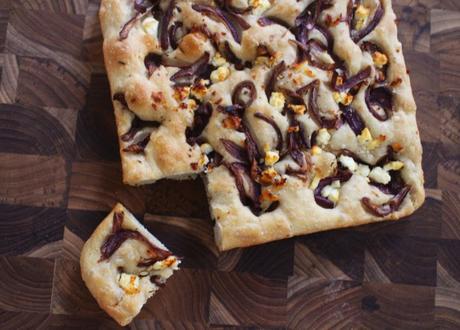
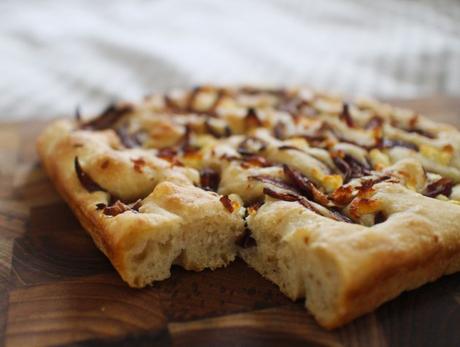
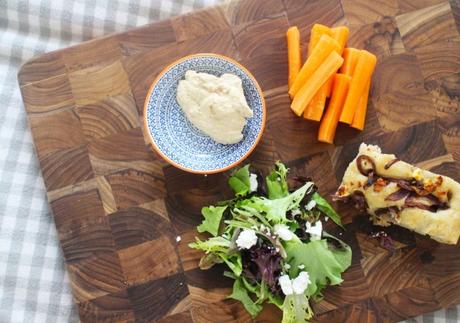
As with most of my bread recipes, I’ve adapted this from James Morten’s Brilliant Bread. I just love his approach to baking bread, how simple his recipes are, and the amount of explanation he gives to the science behind it. By far the best bread book I’ve tried, though I’m still yet to be successful with sourdough!
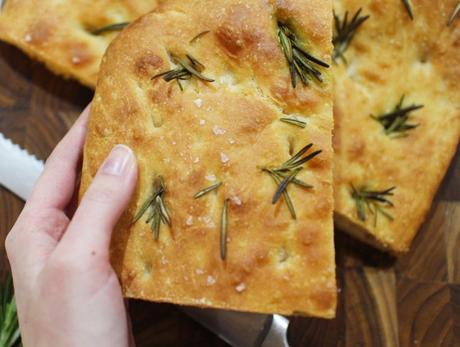
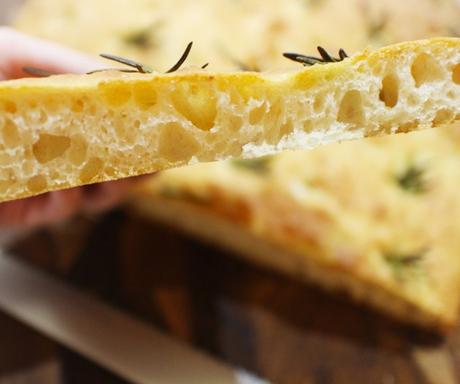
- 500g bread flour
- 7g salt
- 7g yeast
- 400g water (around the temperature of a warm bath, nothing too hot!)
- 40g olive oil
- Toppings – either sea salt, extra oil and half a packet of fresh rosemary, or use some of my red onion chutney and a sprinkling of feta).
Mix the water and olive oil together. Weight out the flour, salt and yeast into a large bowl. Rub them together, then quickly add the water-oil mixture and stir to combine. James gives a health warning here, and I agree – the mixture is very wet (particularly compared to the bagel dough). Don’t add any extra flour. Instead, wet your hands slightly and give it a little knead. Cover the bowl with cling-film and leave to rise for an hour.
Drizzle one hand with a little olive oil, then use this to separate the dough from the bowl. Knead for a few minutes (I keep it in the bowl, saves me making too much mess!) – you want the dough to be able to support itself, and it should also feel a lot smoother when you are done. It doesn’t need to be perfect though! Re-cover and rest for another hour – or if you’re not studying, you could throw it in the fridge for 8-12 hours instead.
Add around a tablespoon of olive oil to a baking tray, and make sure the base is fully covered. Tip your dough into the tin and flatten it out – you want to try and fill the whole tray, so you might need to give it a quick knead first. Leave to prove for a final half hour (or again, throw in the fridge for 8-12 hours).
Once proved, make indentations in the dough by pressing all the way down to the tray. Sprinkle with your chosen toppings, drizzle over a little more olive oil, then bake at 220C for around 20 minutes, until golden and crisp on top. Try to let it cool a little before tucking in!
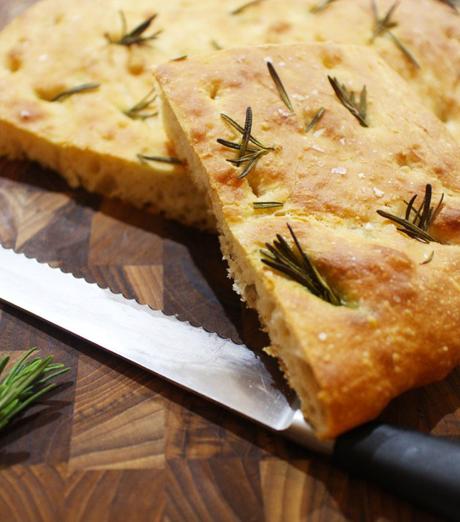
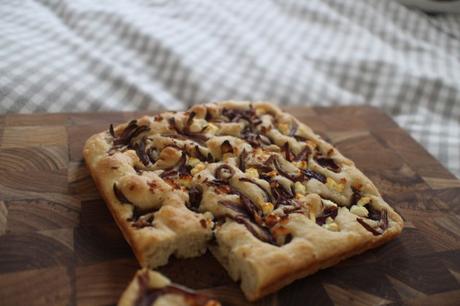
Do you make your own bread? What’s your favorite procrastination method?
